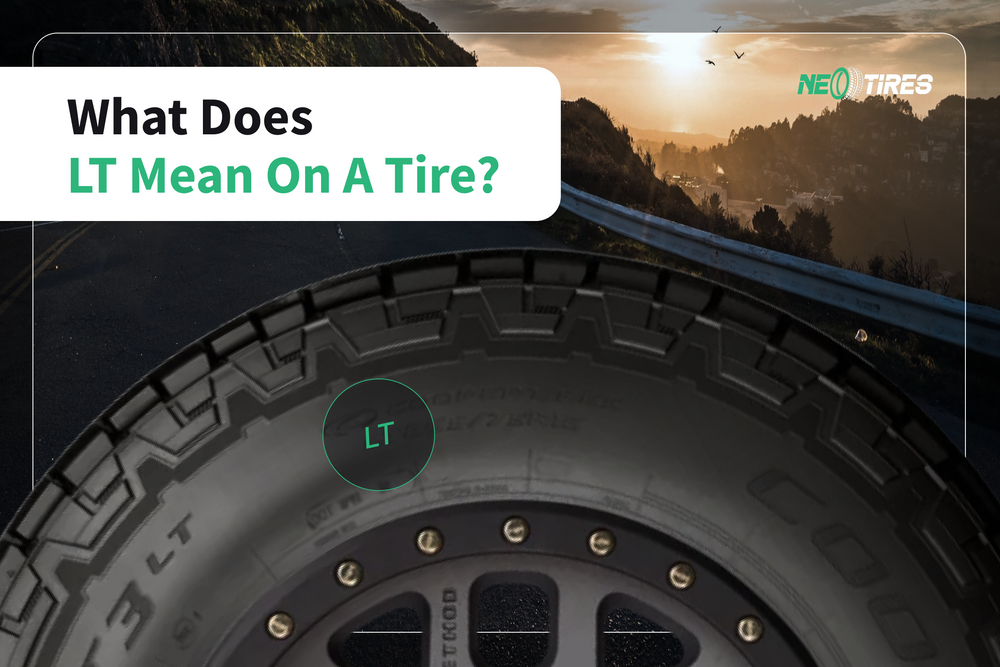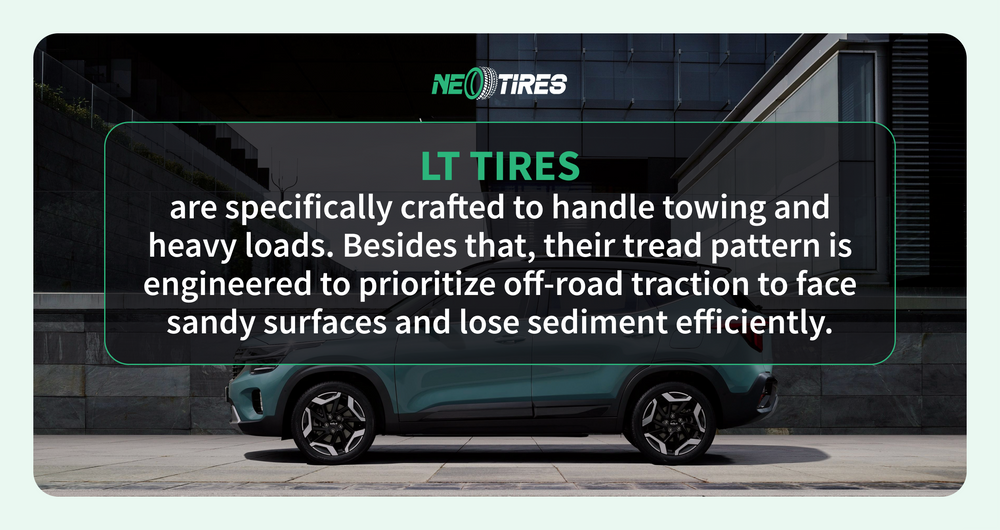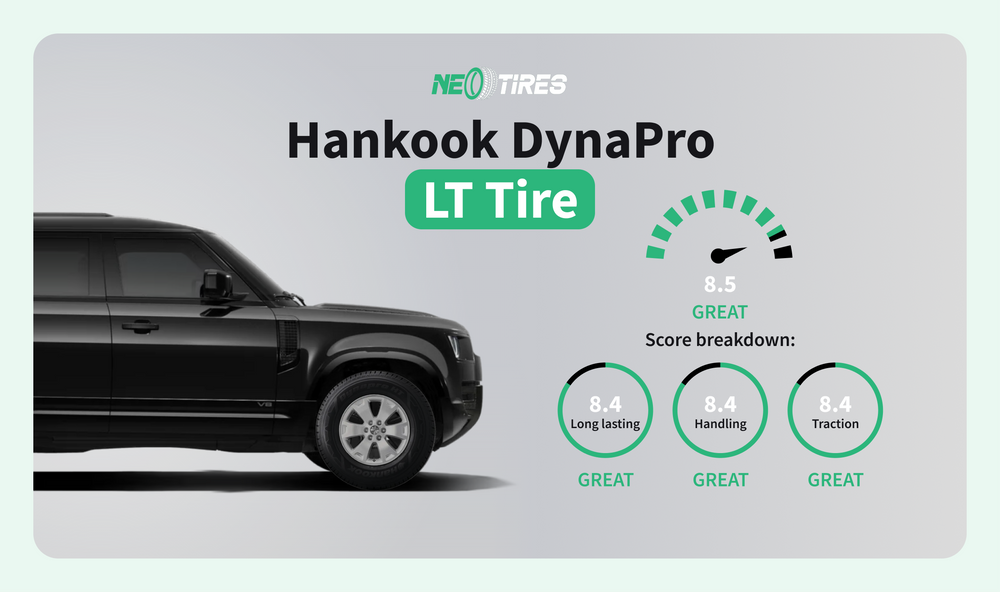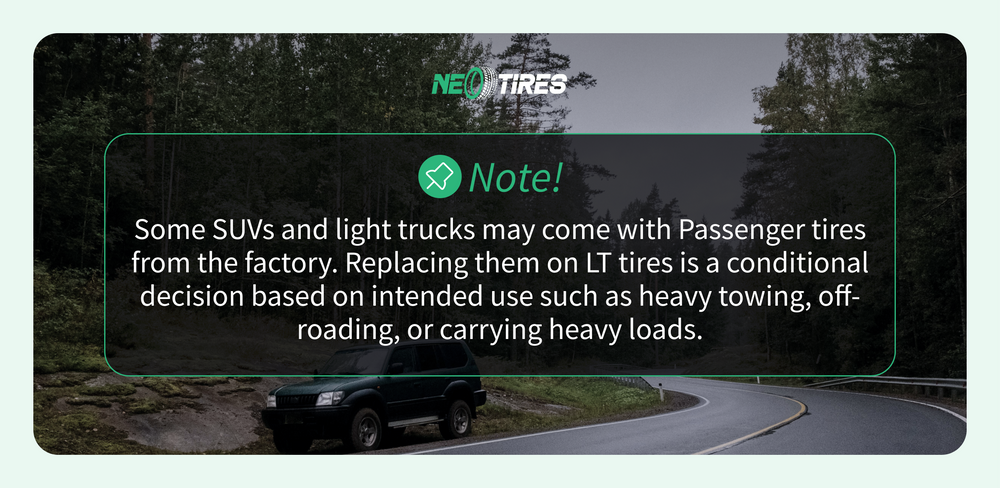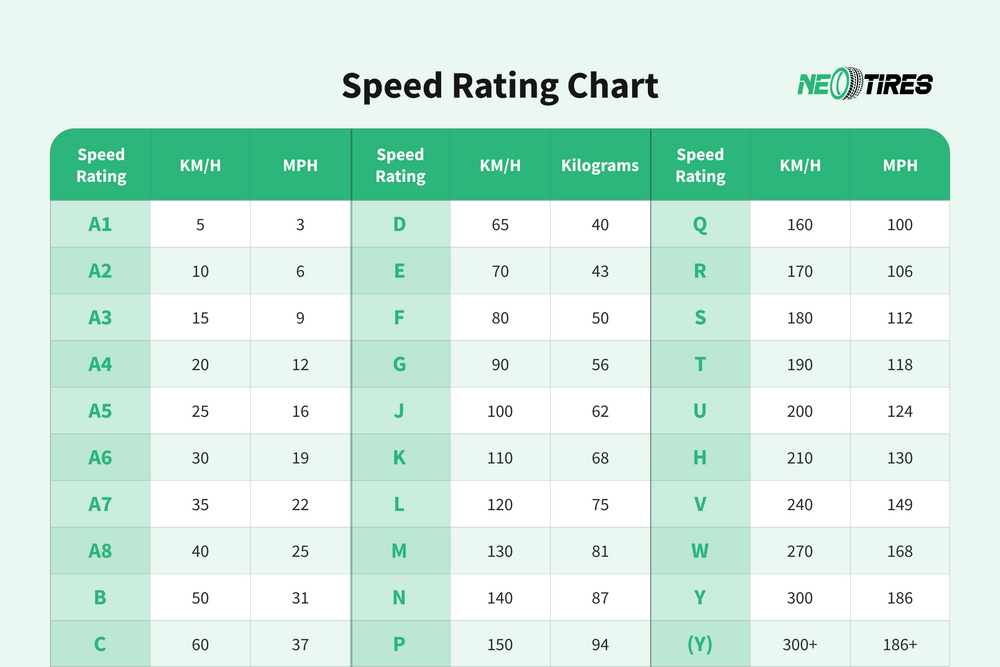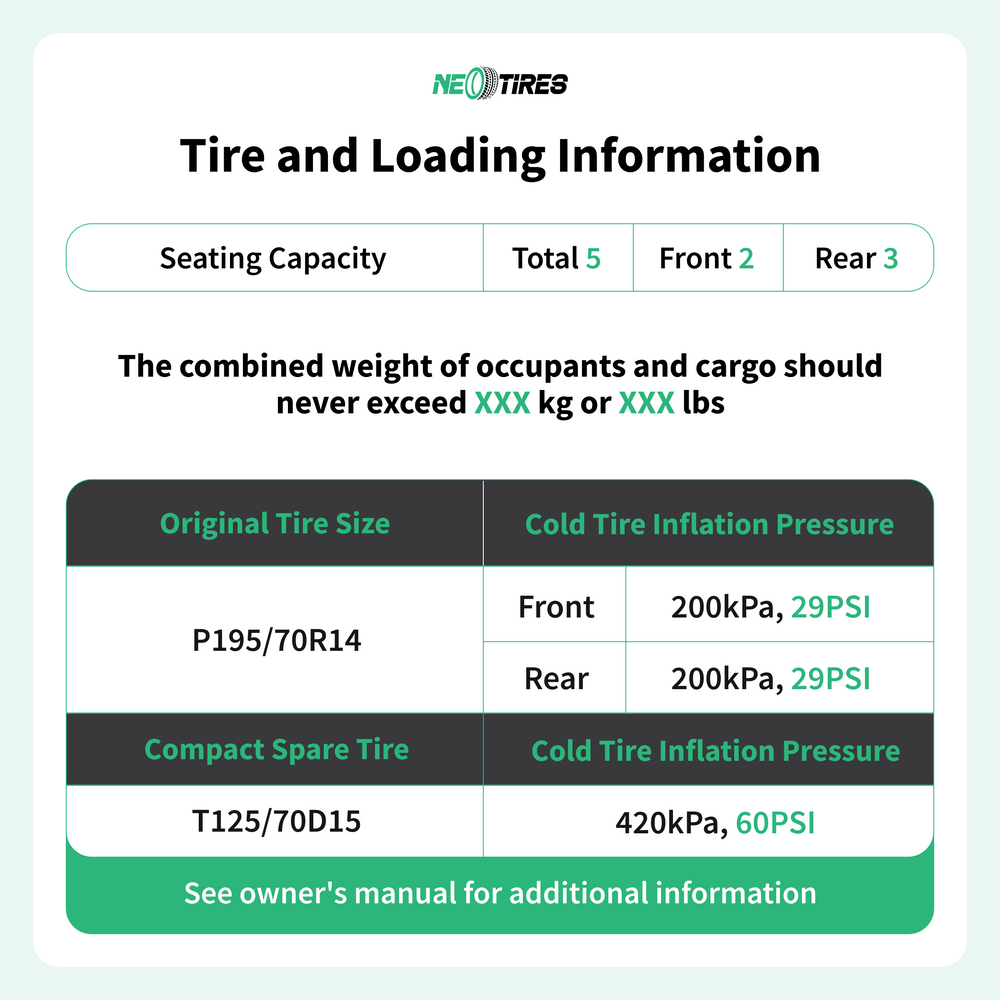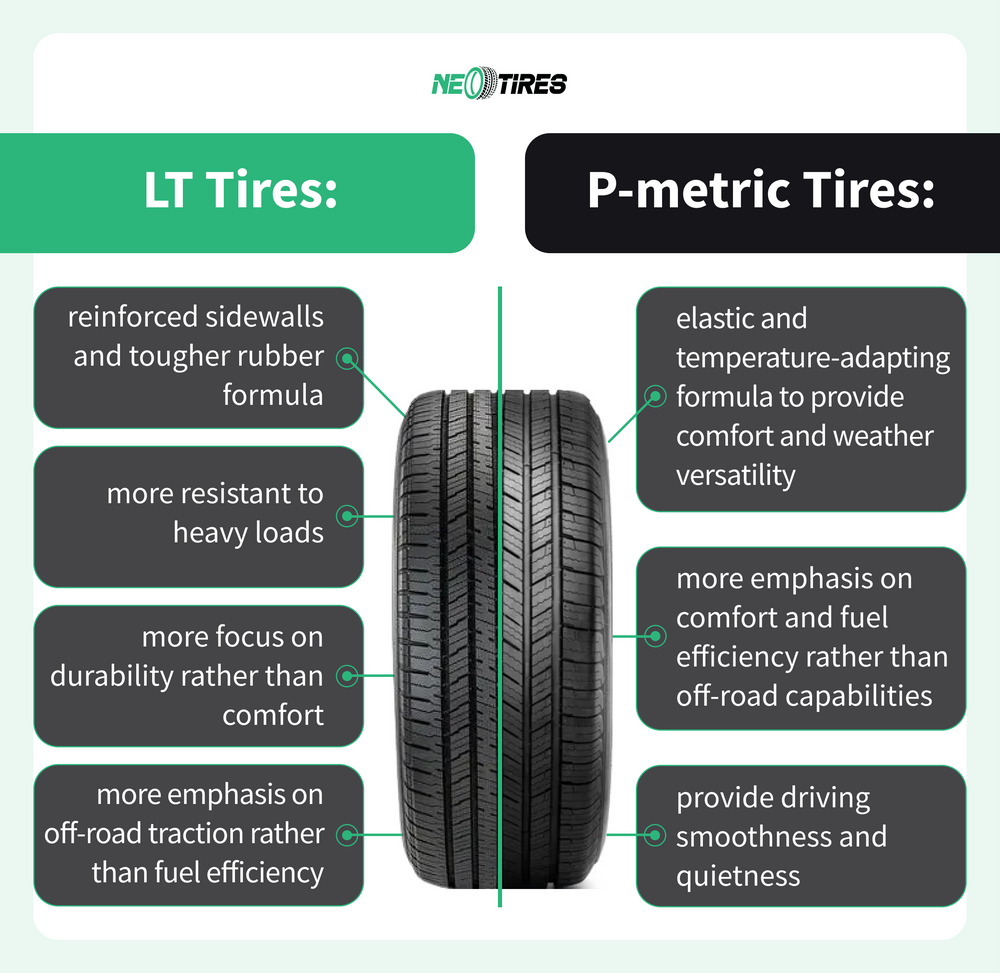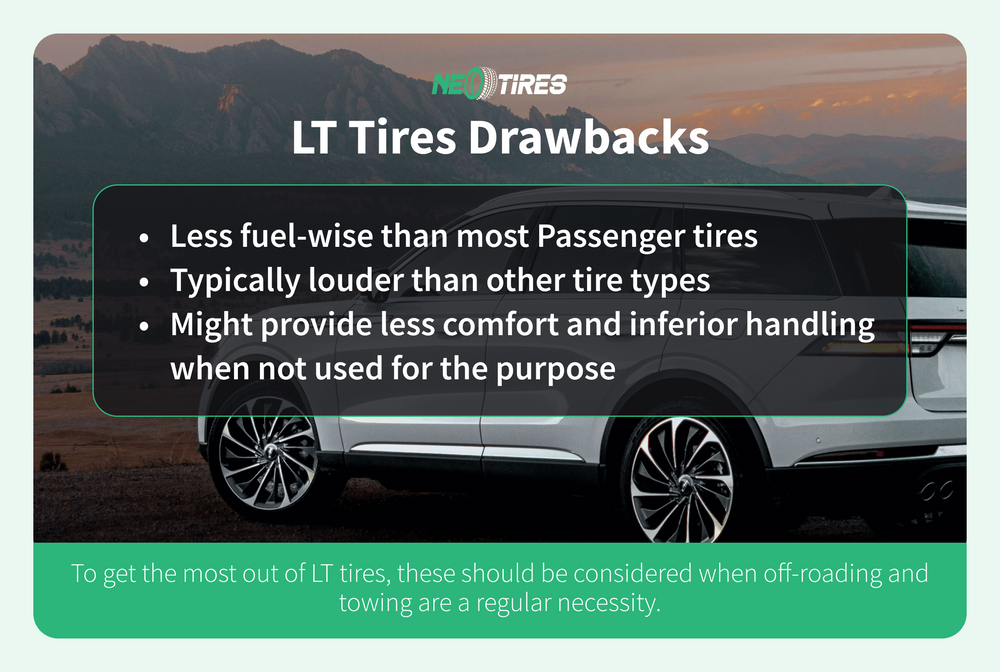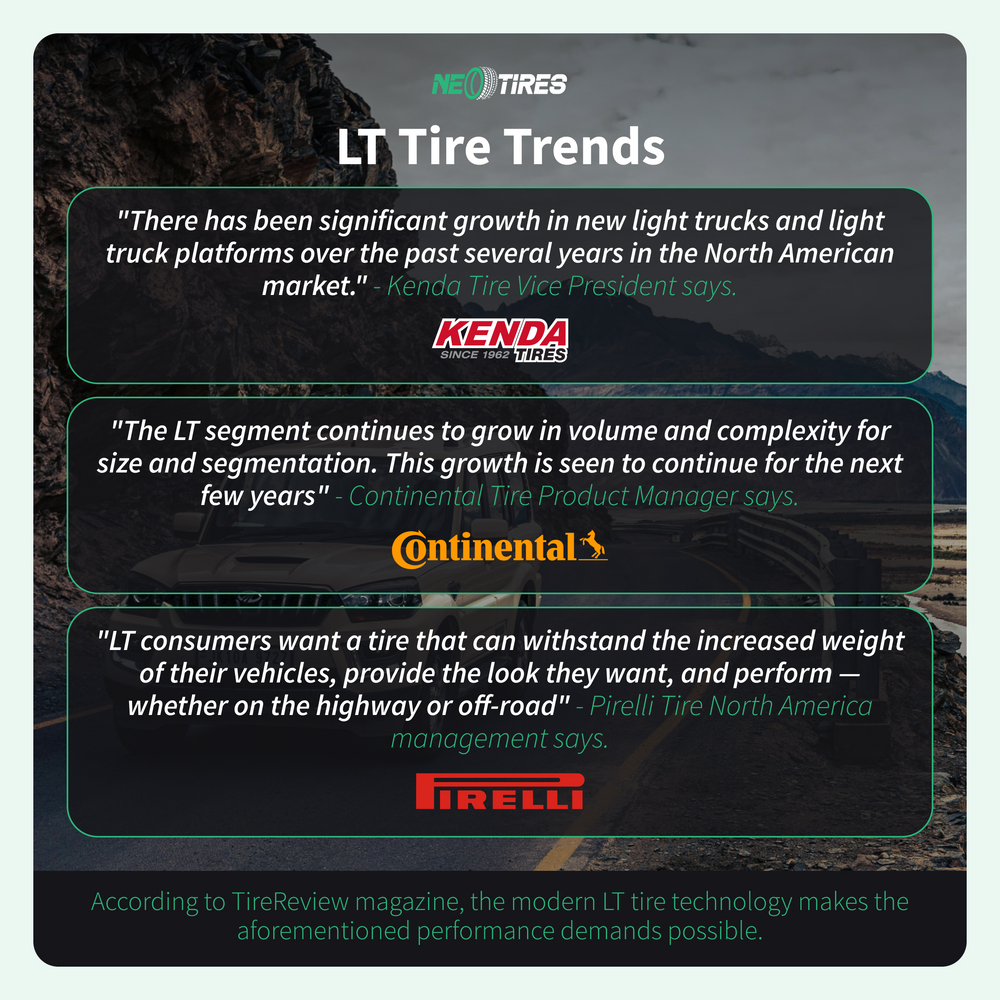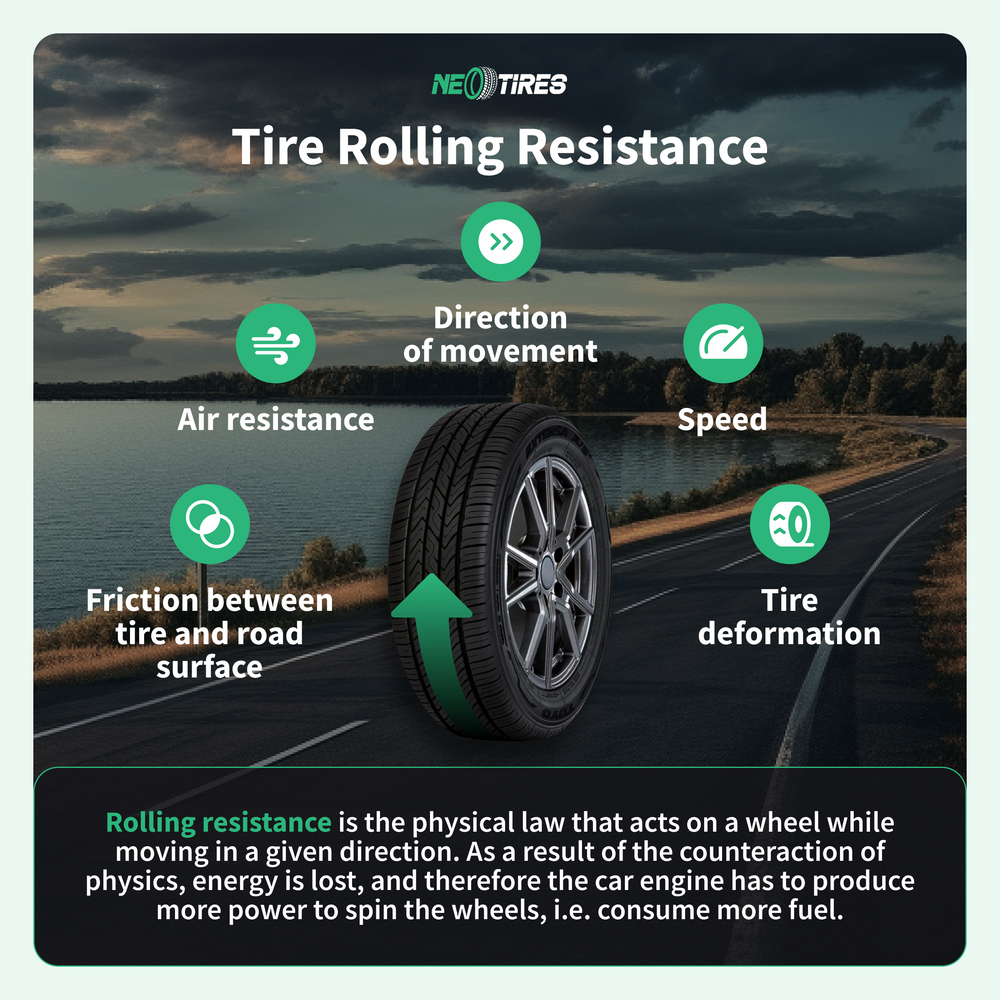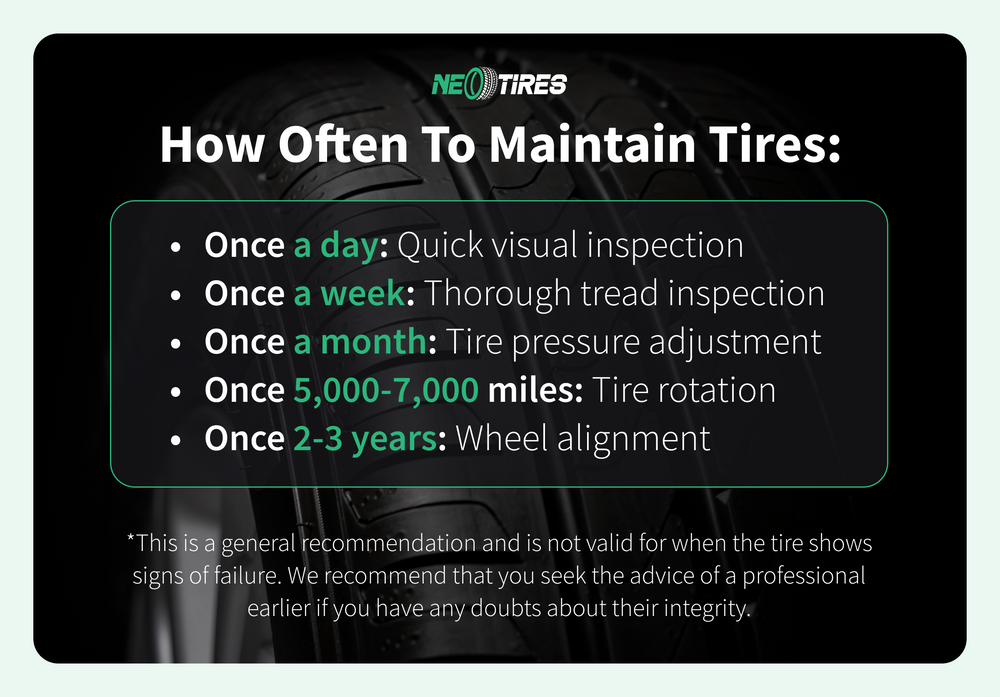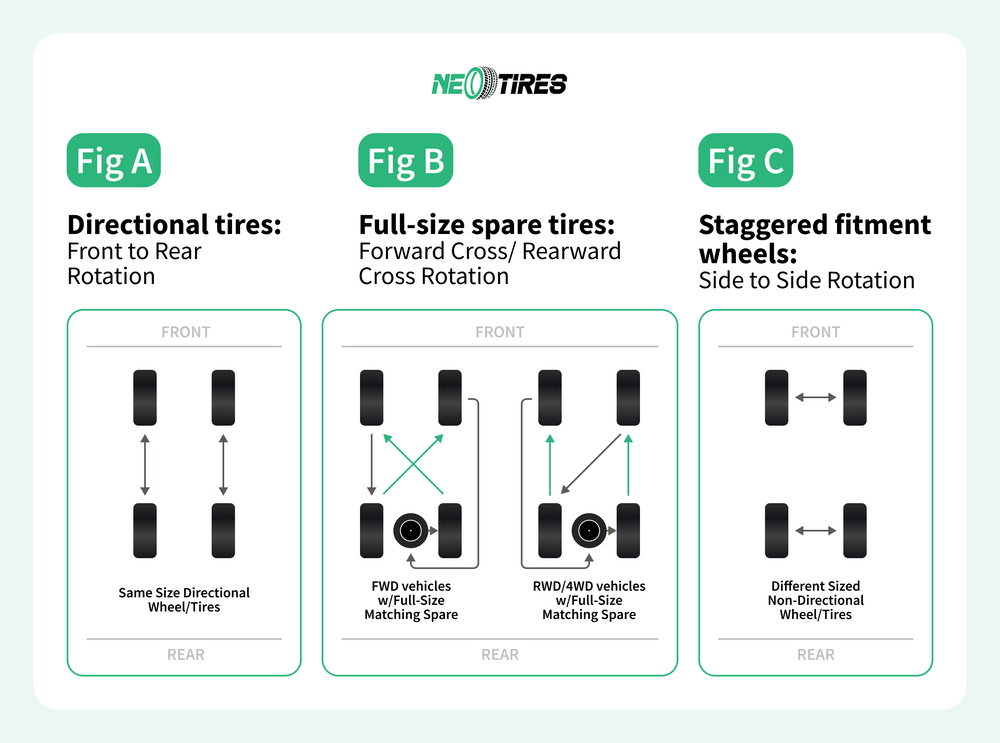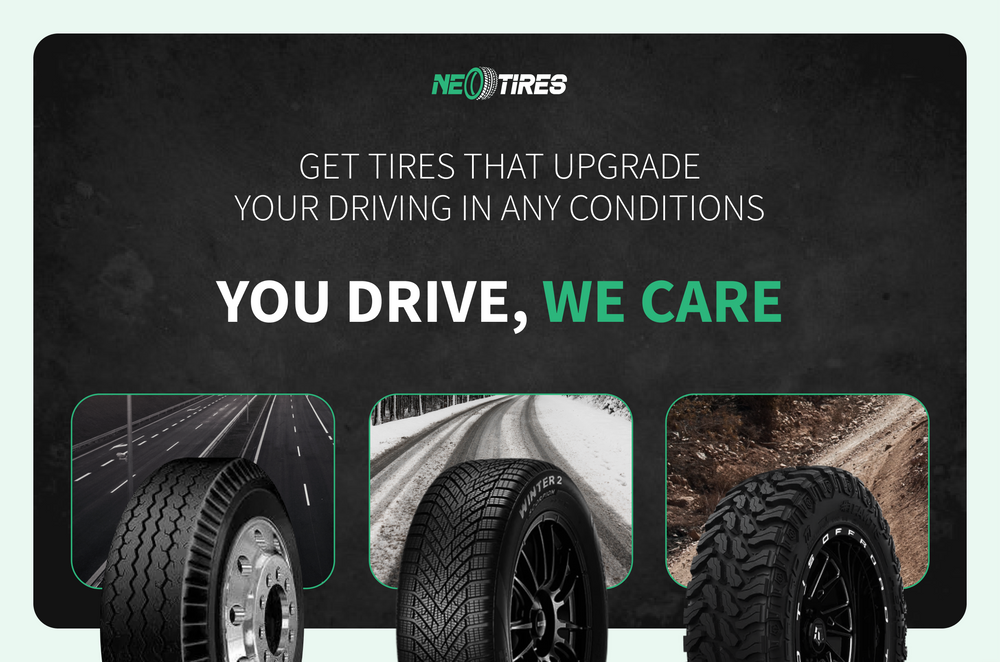Wondering “What does LT mean on a tire?” And most importantly - should you opt for one? Well, you’re not the only one concerned by this question. There are a lot of people who wonder what this means, especially when it comes to choosing tires for SUVs and trucks. LT tires come with a set of specifications making them different from other tire types. These are crafted for specific needs and bring lots of benefits for your driving if choosing them correctly. Otherwise, they also may be the worse choice if these don't align with your driving-specific conditions.
Pretty much like anything else, especially in the automotive world, LT tires come with some clear advantages. Still, they will compromise on other things, meaning they have clear disadvantages too. Only after you fully understand what LT means, understanding their pros and cons, you may decide whether such tires are good for you or not. That's exactly what we are going to do in this section today. So check it out.
Understanding Tire Sidewall Markings
To fully understand what LT means on a tire, you should first understand tire nomenclature. As you may have noticed, the sidewall of a tire contains many different numbers, letters, and markings. As a general rule, most drivers pay attention to the size of a tire, and that’s pretty much it. But there are way more numbers, letters, and markings to read.
Every information on the sidewall of the tire is important. It contains a condensed summary of the tire’s specifications, attributes, and intended purposes. Therefore, all those collections of numbers, letters, and symbols are not random, they actually provide essential insight. These will be extremely important to guide you through the purchasing process and offer further maintenance practices.
In the end, you don’t need to know absolutely everything about tires to drive a car. Nonetheless, there is some basic information that you should know, especially if you need to buy new tires. This way you will ensure maximum safety and maximum performance for your particular vehicle and your particular needs.
So, you may know how to read tire size, but you may also find an important prefix when reading it, mainly found on truck and SUV tires - “LT”.
What Does LT Mean On A Tire?
The “LT” prefix before the tire size stands for “Light Truck” and it is actually a critical piece of the tire nomenclature. This prefix means that the tire is particularly designed for light trucks and certain (bigger) types of SUVs. This type of tire focuses on such attributes as better durability, safer off-road performance, and higher load-withstanding abilities. Similarly, it is considered different from the “P” type of tire, which stands for “Passengers”. So, before the tire size, you may find the prefix “LT” or “P”, indicating two very different tire categories, despite them having the same size.
The problem here is that the “light” in the “Light Truck” often confuses people, making them believe that these tires are designed for smaller loads due to this word. Well, yes, that’s the case if you look at it from the perspective of commercial vehicles and semi-trucks that feature completely different tires, designed for ultra-heavy carrying abilities. Nonetheless, if you look at it from the perspective of a passenger car tire, then the LT tire can withstand significantly heavier loads. That’s why, for most people, LT tires are actually heavy-duty models, much better for towing and hauling, as that’s what they are designed for!
LT tires are created for heavier loads and more rigorous applications than standard passenger tires. These tires often feature reinforcements in their constructions, with stiffer and more durable sidewalls, more robust tread compounds, and a tread design that enhances traction and durability under more challenging conditions. Here are some popular examples of what an LT tire looks like Cordovan Wild Trac, Primacy RTX, and Hankook DynaPro.
Such features are especially beneficial for vehicles that often tow trailers, carry heavy cargo, or travel on rugged terrains. This is the reason why you will usually find the LT prefix on the highway all-season, all-terrain, and off-road tires that usually fit light trucks and larger SUVs.
Vehicles that are great candidates for “Light Truck” tires are heavy-duty trucks, such as the Ford F-250, Ford F-350, Chevrolet Silverado 2500HD, Chevrolet Silverado 3500HD, RAM 2500, RAM 3500, GMC Sierra 2500HD, and GMC Sierra 3500HD. In short, if you know the vehicles in this list, you know that these are larger vehicles than the average cars on the roads. These trucks feature LT tires from the factory as they are particularly designed to carry heavy loads and tow large trailers.
Still, you could find a lot of full-size and even some mid-size trucks and SUVs that will fit LT tires. Some good examples are Toyota Tacoma, Toyota Tundra, Toyota Land Cruiser, Toyota Sequoia, Chevrolet Suburban, Chevrolet Tahoe, Ford Expedition, Ford Explorer, Ford Bronco, GMC Yukon, Nissan Armada, Nissan Titan XD, Dodge Durango, Land Rover Defender, Jeep Gladiator, and Jeep Wrangler. Some of these vehicle versions usually need such tires when they come in heavy-duty versions, for towing purposes, or off-roading.
If you drive such a vehicle but you don’t need any of these, you may go on with Passenger tires, which would be perfectly fine. A good example is the Jeep Wrangler which comes with “P” tires from the factory. Yet, it can well fit the “LT” tires for additional puncture resistance if you plan to go off-roading.
How Do You Read Tire Markings?
It is not only the “LT” prefix that can inform about tire functionality. Several other markings could give more insights regarding the purpose and functional use of it. Some examples are:
Size
Usually, you will find a series of numbers and letters such as LT265/60R18. In this example, “265” indicates the tire’s width in millimeters. “60” indicates the aspect ratio of the tire’s sidewall (60% of the tire’s width), “R” indicates it is a radial tire, while “18” suggests the diameter of the wheel in inches.
Load Index
It shows the maximum load that the tire can support when properly inflated. For example, a load index of 91 indicates that the load-carrying ability is 615 kg (1355 lb) per tire.
Speed Rating
The speed rating is indicated with a single letter, indicating the maximum speed that a tire can safely withstand. For example, the “S” rating on a tire indicates that it can safely handle speeds up to 180 km/h.
The Three "Ts"
Treadwear, traction, and temperature grades are most commonly grouped together. They will offer info regarding the expected tire lifespan, the wet traction abilities, and its ability to resist heat build-up, respectively. Yet, those are mostly expectations rather than actual stats. So, for that, we strongly recommend reading online reviews.
DOT Code
DOT code is an alphanumeric code that will offer info about the tire’s manufacturing date and location. The last four digits usually indicate the week and the year of manufacture. For example, if you find 2423, it means that it was made in the 24th week of the year 2023. That’s another crucial piece of information because tires age over time, which will significantly impact their safety, ability to grip the road, heat resistance, and other aspects.
Max. Pressure
Max. pressure indicates the maximum air pressure that the tire can safely hold. It is important to note this information and ensure you never exceed it. NOTE! This may not be the recommended operating pressure for the tire when mounted on a particular vehicle. It just indicates the pressure at which the tire may start to fail or even explode.
Distinguishing LT Tires From Other Types
Whenever you buy new tires for your vehicle, it is crucial to understand the tire nomenclature to make sure you buy the perfect product for your vehicle and your needs. This includes the P-metric and LT-metric tires. While they may have similar sizes, they are constructed completely differently. That’s why they have different designations and will work completely differently.
The label will indicate the tire’s intended purpose, design attributes, and the performance expected. Let’s check closer what LT tires can offer and what makes them different from P tires.
LT Tires VS Passenger (P) Tires
LT (Light Truck) and P (Passenger) tires have different construction types. This is their main difference. They may both look similar on the outside, with similar sizes, however, they are different on the inside, which means that they will offer different performances.
The main difference is that LT tires are designed with reinforcements in their sidewall. Not only that, but they are usually made with significantly more durable materials too. This is because such tires are created to withstand higher loads, such as for hauling and towing. Thus, these tires will be able to safely handle harsher surfaces that could pierce through the tire.
LT tires with a more durable, stronger, and overall rugged construction have a higher load-carrying capacity. Such tires can carry heavier weights. This makes them way better for substantial cargo moving. In comparison, P tires are just made for standard passenger vehicles, focusing mainly on comfort and offering a smoother ride. They also are crafted with fuel efficiency in mind rather than high load capacity.
The tires with LT designation are made for more diverse driving conditions than P tires. For example, they can endure more challenging road surfaces that are often encountered by trucks and large SUVs, such as when off-roading through dirt roads, gravel, rocky surfaces, and so on. They are also meant for heavy towing.
Still, it is important to understand that due to the extra internal reinforcements in their construction, LT tires are heavier than P tires. This will have a negative effect on the fuel efficiency of your vehicle. It is because the added unsprung weight makes your vehicle’s engine work extra hard. Moreover, due to extra weight, the suspension system works tough too, and it might affect the steering response, handling agility, as well as comfort!
LT Tires Unique Features
Light Truck (LT) tires come with unique features that differentiate them from the P tires. The biggest difference is the reinforcements of sidewalls. This reinforcement will enhance the load-carrying ability of the tire and will also offer better resistance against punctures and cuts. That’s an extremely important feature when it comes to off-roading, such as driving on rough terrains.
Besides, LT tires tend to come with more aggressive tread patterns with deeper and wider grooves. This way, on average, the deeper tread of LT tires will offer better traction on challenging terrains. We’re talking about such terrains as rocky and muddy trails, including snowy surfaces. So, they are more resistant offering longer tire life under heavy-duty and rugged terrain use.
Another feature of LT tires is their superior heat dissipation properties. That’s important for such tires because they often need to deal with rigorous driving conditions and heavy loads. That’s why the advanced heat dissipation features are important. Efficient heat distribution ensures that the tire remains ventilated during demanding situations. As a result, the tire will provide optimal performance and will extend its lifespan.
One more thing to mention, due to the rubber, fabric, and steel extra reinforcement, LT tires come with higher load ratings. They may actually come with more plies as well.
LT Tires Drawbacks
Yes, LT metric tires come with a lot of benefits. Nonetheless, these benefits come with various downsides too. This is why only drivers who actually need such tires will get the most out of them. In short, there’s no reason to put LT tires on your truck or SUV if you only drive on paved roads, you never tow with it, and you don’t carry heavy loads. Otherwise, mounting such tires may come with negative effects. One of them is the fuel economy.
Since P tires are much lighter than LT tires, they would be a more fuel-friendly alternative. Also, all the necessary handling, comfort, and performance for those who drive on paved roads are provided in the P tires if there isn't a need for off-road and towing attributes.
So, while you can put LT tires just for the sake of it, your truck/SUV will not be as smooth or quiet, and you may notice an increase in fuel intake. Therefore, P tires are still the best choice for most people prioritizing easy and smooth driving. Still, there are particular situations when LT tires are more of a mandatory need. Let's take a look below.
Importance of LT Tires for Specific Vehicles
Tires are for vehicles like shoes for your feet. You wouldn’t wear flip-flops on a mountain hike, would you? On the other hand, you wouldn’t wear military boots when going to the beach. Well, the same is true with tires. The same vehicle may require different “shoes” depending on where exactly you plan to drive. It is important to ensure that the tires you mount are up to the task at hand. In other words, the tires must fit your truck in terms of size (similar to how shoes should fit your feet), but also be appropriate for the necessary task (such as carrying the entire weight of the vehicle and everything it carries/tows) and also be able to traverse rugged terrains.
This is where the “LT” (Light Truck) tires are mostly helpful. These tires are particularly designed for (usually) larger vehicles that will demand more than what regular passenger car tires can offer. That includes the carrying abilities, towing abilities, and harsher road conditions. Let's check in more detail why certain types of vehicles benefit from LT tires so much below.
LT Tire Advantages for Trucks and SUVs
A lot of SUVs and trucks nowadays have become more of a status symbol. Nevertheless, there are still a lot of these vehicles that are used for carrying heavy loads and for off-roading adventures. LT tires are significantly better than P tires for such conditions. This is because they have an overall much stiffer construction type, with reinforcements in their sidewalls, and tougher rubber compounds.
Additionally, most LT tires come with deeper and wider grooves on the tread. This will significantly enhance traction on gravel, dirt, mud, and snow, in short, in more challenging terrain conditions. The aggressive tread pattern with deeper and wider grooves on LT tires will make sure that the SUVs and trucks will remain grounded and stable with enough grip and traction, regardless of the surface they need to deal with.
Another important feature of LT tires is that they are way more stable when carrying heavier loads in their trunks. Or whenever they need to tow. Unlike P tires, the LT ones won’t be squishy under loads, and this will significantly improve the overloaded vehicle' stability. This is why drivers can confidently run their SUVs or trucks, as the vehicle will respond better and accurately to the steering commands even under heavy loads.
Load Carrying Capacities and Performance
LT tires are available in much higher load ratings than P metric tires. This is the reason why these tires are perfect for drivers who often tow or haul with their vehicles.
Not only that, but LT tires are also significantly more resistant to overheating. That’s an important quality for a tire meant to tow or haul heavy weights. As a result, it ensures that the tire’s structure and rubber compound won’t degrade or even fail at higher speeds, which could lead to a blowout and other nasty consequences. In short, loaded P tires are significantly more likely to fail and blow out than loaded LT tires. Besides, the better temperature resistance of LT tires makes sure that they are not going to wear out prematurely or irregularly, or completely fail during heavy-duty applications.
One more thing to mention - because of the stiffer construction, LT tires will offer better stability on the highway at higher speeds under heavier loads when you tow a large trailer or just carry some heavier loads in the trunk.
Considerations When Opting for LT Tires
Those who consider buying LT tires should first consider their driving needs. You could upgrade to LT tires even if you previously had P tires on your truck or SUV. But you need to understand if you really need it first. To do so, you should start by considering your driving needs. Mainly the type of roads that you plan to drive, and/or the loads that you plan to carry/tow in/with your vehicle.
That’s because LT tires are better than P tires only in certain uses and vehicles. However, P tires are better than LT tires in other uses (and vehicles). Both these tires come with their own set of advantages and disadvantages. This will seriously affect different aspects of your driving experience. So, if you wonder whether you need LT or P tires for your SUV or truck, check below some critical considerations that you need to keep in mind before making a decision.
Safety Concerns
One of the most important features of LT tires is their sidewall reinforcements. This stiffer construction is designed to handle heavier loads. This will also come with increased safety when towing trailers and when carrying heavier loads or when the vehicle is fully loaded with passengers and luggage. In short, the stronger construction of LT tires will offer a safer ride when you tow or carry heavy loads.
Besides, because they are robust, they are also less likely to be pierced, cut, or punctured on harsher terrains, such as when off-roading on dirt and gravel. That’s an essential characteristic when you go off-roading because those terrains pose a threat to tires. This way, LT tires are less likely to leave you stuck in the middle of nowhere with a flat tire due to a puncture or cut. Additionally, LT tires usually have more aggressive tread patterns with wider grooves, offering much higher off-road grip, and reducing the chance of potential rollovers or loss of control.
Moreover, LT tires tend to provide shorter stopping distances under load because of their more rugged construction. They will actually ruin the stopping distance when the vehicle is unloaded because of their higher unsprung weight. Yet, if the vehicle is loaded, it will have a shorter braking distance than P tires.
The higher unsprung weight will also ruin the comfort (leading to a bumpier ride), and ruin handling. Especially when the vehicle is unloaded. For these reasons, P tires are better when you don’t plan to tow or carry heavy loads and plan to drive mostly on paved roads such as highways. But when it comes to towing, carrying heavy loads, and/or off-roading then LT tires are better and safer!
Impact On Fuel Efficiency And Ride Comfort
While LT tires offer much better load-carrying abilities and much better grip when off-roading, they are worse than P tires when it comes to fuel efficiency and ride comfort. Worse fuel efficiency can be crucial for SUVs and truck owners as these vehicles tend to have higher consumptions a priori. No need to make it worse if you plan to drive such vehicles on paved roads unloaded.
LT tires are usually heavier than P tires. Moreover, they have tread patterns designed to provide a stronger grip in various terrain conditions. Both of these factors will result in increased rolling resistance. This can and most likely will affect your vehicle’s fuel efficiency. The difference may not be huge, but when driving long distances or extended periods, you could still notice an increase in fuel consumption.
Besides, the extra unsprung weight will make it harder for the suspension to control the wheel on bumpy roads. This will lead to an overall worse comfort, as it causes a bumpier ride. The stronger and heavier construction of LT tires won’t absorb the driving shock as well, so they will highlight the road imperfections instead. That’s why you can expect an overall harsher ride with more vibrations when opting for LT tires. They tend to be louder too. It depends on the type of tire you choose, but they still may be louder.
One last thing to mention, they are also going to affect the performance of your truck/SUV. Because of the extra unsprung weight, they will ruin the acceleration time a bit (adding a few tenths of a second to the 0-60 mph acceleration), and make your vehicle less responsive in corners, especially when driving unloaded.
Maintenance and Longevity of LT Tires
LT tires require frequent and proper maintenance, just like the P tires. In fact, I would say that because they are meant to endure even more strain than the average passenger tire, regular maintenance is even more important!
Optimal Tire Pressure And Care
As with any other tire, it is crucial to always follow the recommended tire pressure as indicated by the tire manufacturer or in your vehicle’s manual. (May also check the driver’s side door sticker for recommended pressure).
Nonetheless, it is important to note that tires (even the P ones) may sometimes require different air pressure when the vehicle is loaded versus when it is empty ( it requires more pressure when loaded). That’s especially true for LT tires as they are meant to carry/tow heavier weights. That’s why, when it comes to optimal tire pressure, you should carefully note the weight in your vehicle.
Keep in mind that it is the air pressure that actually carries most of the weight. So it is even more important for LT tires to perform with the recommended pressure levels. That’s why you must ensure you regularly and frequently check the tire pressure on your LT tires, especially if you towed or carried heavy loads recently (or plan to do it soon). It is best to check the pressure on your LT tires every two weeks, before long trips, and before loading the vehicle.
Similar to any other tire, LT tires will age faster if exposed to various elements such as extreme temperatures, UV rays (in the sun), and so on. Store them correctly to avoid premature aging.
Wear Patterns And Tire Replacement Intervals
LT tires will wear out (and age) like any other tire. Moreover, while they are more resistant to various external damages such as cuts and punctures, they may still get pierced. Therefore, we strongly recommend inspecting them for any signs of uneven wear, damage, or anything else. Uneven wear could be a sign of misalignment, improper inflation, or suspension issues, similar to any other tire.
Also, common wear patterns include edge wear (indicates under-inflation), center wear (indicates over-inflation), and patchy wear (indicates suspension or vehicle alignment issues). Also, similar to P tires, the minimum legal tread depth limit is 2/32 of an inch. This means that you should replace tires when they reach this tread depth. But if you expect good grip in wet or off-road conditions, better replace them sooner (such as at 4/32 of an inch).
LT tires also need tire rotation exactly as any other type of tire. To ensure long-lasting tires with every wear, you need to rotate them exactly as P tires, which is every 6,000 to 8,000 miles. For your convenience, you could do it at each oil change. In fact, if you frequently drive fully loaded (carry or tow heavy loads) or if you frequently drive off-road, you may consider rotating them even sooner such as every 3,000 to 4,000 miles.
Conclusion
LT tires have become popular in recent years due to the fact that SUVs and trucks seem to become more and more sought-after. There’s no need for such tires whenever you drive your SUV/Light truck on highways, unloaded and within city limits. They are perfect for those who off road, such as rock crawling or through mud terrains, or for those who drive with heavy-duty stuff, towing, or carrying large cargo.
So, we recommend that you buy LT tires if you really need them because while they do offer great advantages, they also come with disadvantages. Ensure that the advantages will prevail only after assessing your needs. For some drivers, LT tires can be perfect, but for others, they may do more harm than good.
LT Tires: FAQs
What Does LT Mean On A Tire?
LT-metric (Light Truck) tires are particularly designed to work best for trucks, full-size SUVs, and Vans. These tires are basically products with extra reinforcements, stiffer construction, being overall more durable with extra steel belts, thicker, stiffer sidewalls, and a deeper tread. Such an architecture makes the tire withstand extra load, offers better damage resistance, and better off-road traction.
Do LT Tires Last Longer Than P Tires?
From an architectural point of view, LT tires are more resistant to damage due to their reinforced sidewalls. So, technically, these might last longer than a regular passenger tire. However, we must consider that LT tires are generally much more exposed to harsh off-road conditions and heavy loads. These factors easily accelerate their deterioration process chair and despite the much more solid construction. Another influential factor is tire maintenance, driving style, and their correct (or incorrect) use in specific conditions. So, tire longevity cannot be estimated only based on the rubber formula.
Why Trust NeoTires?
NeoTires is here to guide you in everything rubber on the road means and how to improve your driving experience in various conditions. Our team is passionate about the automobile and tire industry, which is why we carefully follow its development. Then, we get information from the most reputable tire makers about the new technologies, products, and advancements in this sector to inform our customers and readers.
We are also qualified to help all drivers find the right product for them. Choosing the right tire is a complex process that is not limited only to the price or size of the tire. We offer a wide range of products and we can assist you in choosing the one that best fits your specific needs and driving conditions.
You are welcome to reach us with any tire-related questions. Contact us for tire deals, rebates, free shipping, popular tire brands, or just for driving tips to improve your driving safety. We will be happy to share our experience and knowledge. Drive safe and choose your tires wisely!




